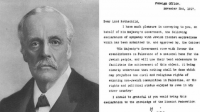
Links
Sheba Medical Centre
Melanie Phillips
Shariah Finance Watch
Australian Islamist Monitor - MultiFaith
West Australian Friends of Israel
Why Israel is at war
Lozowick Blog
NeoZionoid The NeoZionoiZeoN blog
Blank pages of the age
Silent Runnings
Jewish Issues watchdog
Discover more about Israel advocacy
Zionists the creation of Israel
Dissecting the Left
Paula says
Perspectives on Israel - Zionists
Zionism & Israel Information Center
Zionism educational seminars
Christian dhimmitude
Forum on Mideast
Israel Blog - documents terror war against Israelis
Zionism on the web
RECOMMENDED: newsback News discussion community
RSS Feed software from CarP
International law, Arab-Israeli conflict
Think-Israel
The Big Lies
Shmloozing with terrorists
IDF ON YOUTUBE
Israel's contributions to the world
MEMRI
Mark Durie Blog
The latest good news from Israel...new inventions, cures, advances.
support defenders of Israel
The Gaza War 2014
The 2014 Gaza Conflict Factual and Legal Aspects
To get maximum benefit from the ICJS website Register now. Select the topics which interest you.
Hezbollah’s missiles back in Lebanon
Four months after Israel launched its onslaught against Hezbollah, the Lebanese guerrillas are back in south Lebanon stronger than ever and armed with more rockets than they had before the conflict, according to Israeli intelligence.
During the month-long war, which began on July 12, Hezbollah fired 200 to 250 rockets a day into Israel, killing 43 civilians and terrorising much of the north of the country.
“Since the ceasefire, additional rockets, weapons and military equipment have reached Hezbollah,” said an Israeli intelligence officer. “We assume they now have about 20,000 rockets of all ranges — a bit more than they had before July 12.”
Sheikh Hassan Nasrallah, the leader of Hezbollah, has confirmed the Israeli estimate. In a recent interview with al-Manar, the Hezbollah television station, he claimed his organisation had restocked its arsenal and now held at least 30,000 rockets, sufficient for five months of war.
Israeli military intelligence has warned the government that renewed fighting with Hezbollah, which it regards as a terrorist organisation, should be expected as early as next spring.
In response, Israeli forces have taken emergency action. They have postponed a plan to reduce the length of national service — currently 36 months for men and about 24 months for women — and are stepping up production of better armoured tanks.
They are also grouping all special forces into a single new division and are developing laser technology, jointly with the United States, to shoot down Hezbollah’s rockets.
On the border with Lebanon it is easy to understand Israeli concerns. A sniper from the Israeli 50th infantry brigade said last week that Hezbollah was active, although its members wore civilian clothes rather than uniforms.
The sniper, a 24-year-old lawyer from New York on national service, watched through his gun sight as a young man carrying an AK-47 assault rifle climbed from a Jeep. “He was walking quickly and all of a sudden he disappeared into a hidden shelter,” he said. “Then the guy went back to the Jeep and back to the tunnel, checking how quickly he could get there. Then he climbed into the Jeep and drove away.
He added: “We feel that Hezbollah are constantly there, though we rarely see any weapons.”
The Israeli military estimates that at least 5,000 rockets are hidden in secret shelters along the border, which it failed to find before the ceasefire came into effect on August 14.
Iranian-made long-range Zelzal rockets, which could reach Tel Aviv, have been stored in hidden locations. “We’re now in a race to locate the new rockets,” said a Mossad source.
Tracking down the Iranian rockets was one of Israel’s few military successes in the summer. According to sources, the Israeli air force destroyed them on the first night of battle. “We believe Hezbollah have learnt their lesson and it will be much harder to locate them next time,” said the source.
Israel has not yet found a way to tackle the threat from the short and medium-range rockets. It is developing the Nautilus laser-guided cannon in an attempt to intercept them. “It still remains to be seen if the laser gun will work,” said another source. “But it will take up to three years and might be too late for the next war.”
Israel is alarmed at the burgeoning self-confidence of Nasrallah and what it perceives as his intention to undermine Lebanon’s fragile government and take over the country’s politics.
Talks in Beirut to defuse the crisis collapsed yesterday. Nasrallah has set a deadline of tomorrow for his demands to be met or he will stage mass demonstrations.
# reads: 218
Original piece is http://www.timesonline.co.uk/article/0,,2089-2449728,00.html





















